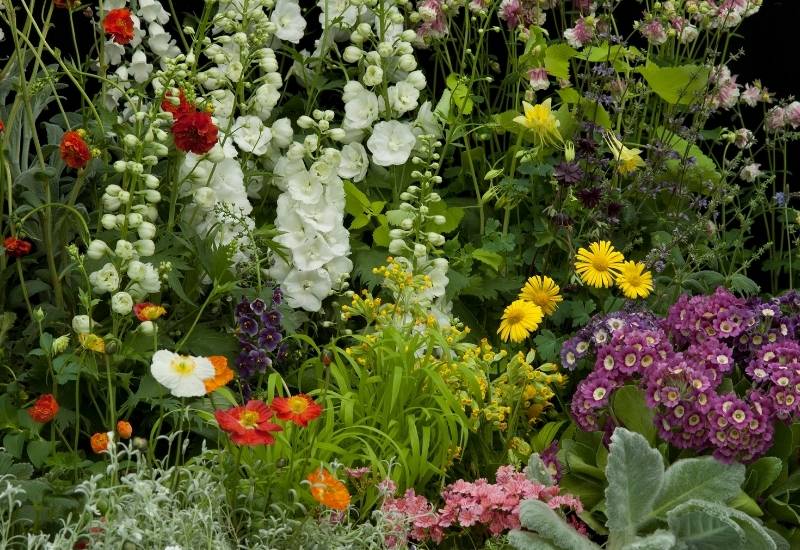
You plant your annuals, go back to them a week later, and deer have feasted on them! What a disaster! My heart goes out to you – but that’s not going to spare you the sight of a flower bed becoming a salad bowl for deer, is it?
Most annuals are appetizing to deer, but there are few annual flowers that deer do not prefer to eat. These are usually strong-smelling plants or plants with fluffy foliage, which deer do not like.
Luckily, there are some beautiful and easy-care annual flowers that deer cannot stomach; popular annual flowers that are resistant to deer include include cosmos, nasturtium, and annual marigolds!
So, starting a garden with annuals that deer won’t eat is the best way to make your flower beds garden deer proof.
Here’s a collection of some of my favorite annual plant varieties that deer will leave alone, along with a guide on how and where to plant them in your garden bed, border, or container.
Why Deer Love Annuals?
But have you ever asked yourself why deer love annual plants? Let me tell you…
Annuals are a major problem with deer. Or better, deer are a major problem with annuals. They like them more than perennials on average. Why?
Maybe because they have a fast growing rate, and they are tender and juicy. Few are thorny, few are woody or hard, in fact…
So, if you love annuals and you live in a place where deer visit… I see why you end up going crazy year after year.
The point gets worse because we often use annuals to fill in gaps in borders and flower beds… And deer may have good taste when it comes to your flowers…
…But they have no table manners and trample all over all your plants, annuals, perennial, food or not food for them. A single annual plant they really love may spell disaster for a whole border you spent ages working on!
So, limit your choice to deer resistant annuals if deer are a serious problem in your garden.
But why do deer like some plants and dislike others?
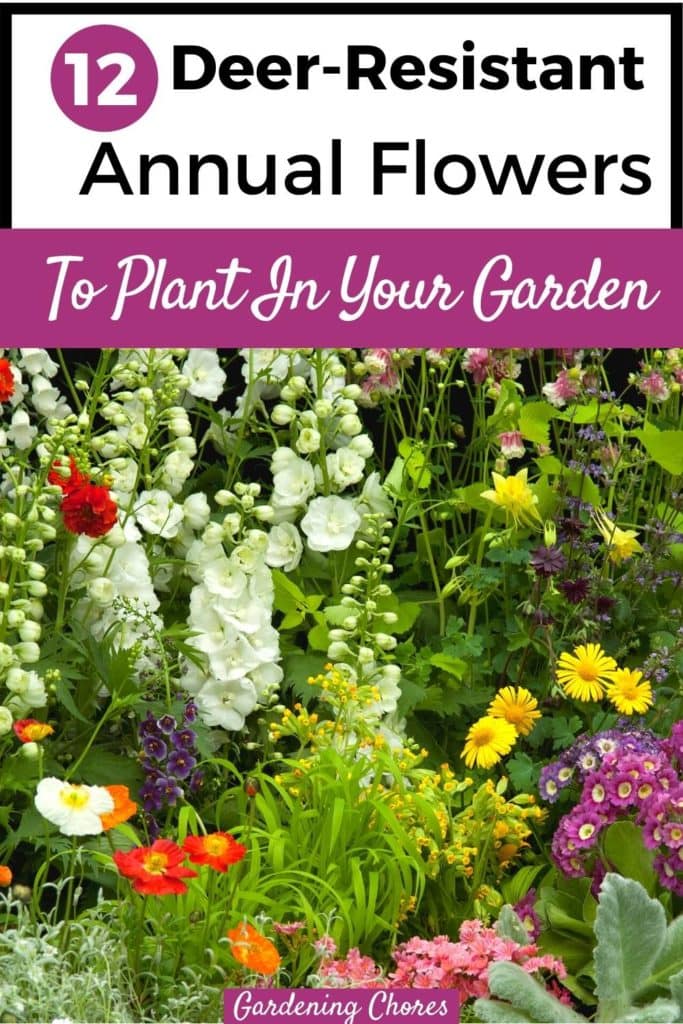
What Makes an Annual Plant Deer Resistant?
It’s really a matter of taste when a deer will look at an annual and think, “No, not for me, thanks!” But there are some key qualities that make plants disgusting to deer. And here are types plants that deer usually don’t like to eat:
This means that if you grow plants that are toxic to deer, you can literally keep them away from your flower beds! Nice trick, isn’t it?
And now it’s time to start out list of sure deer resistant annuals for your garden!
12 Best Flowering Annuals That Deer Will Not Eat
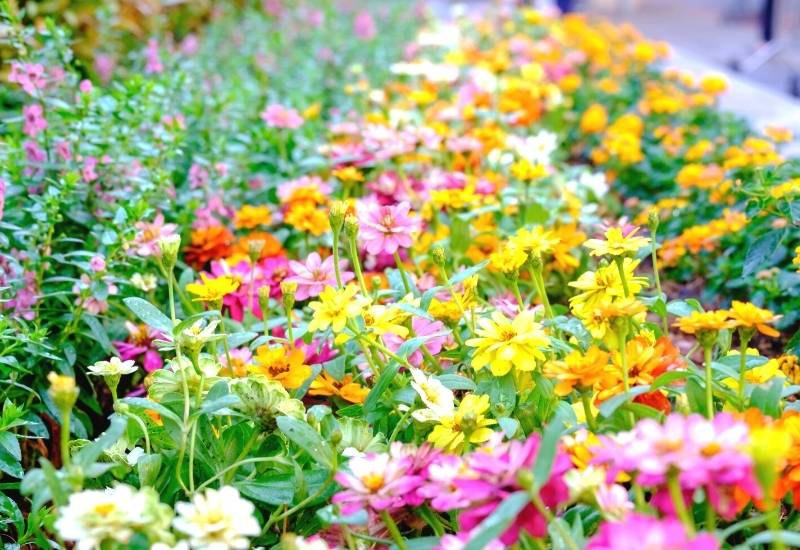
So, wonder which of all the annuals we grow in gardens will not be bothered by deer? Here are 20 of the best flowering annuals that are deer resistant:
1: Cosmos (Cosmos spp.)
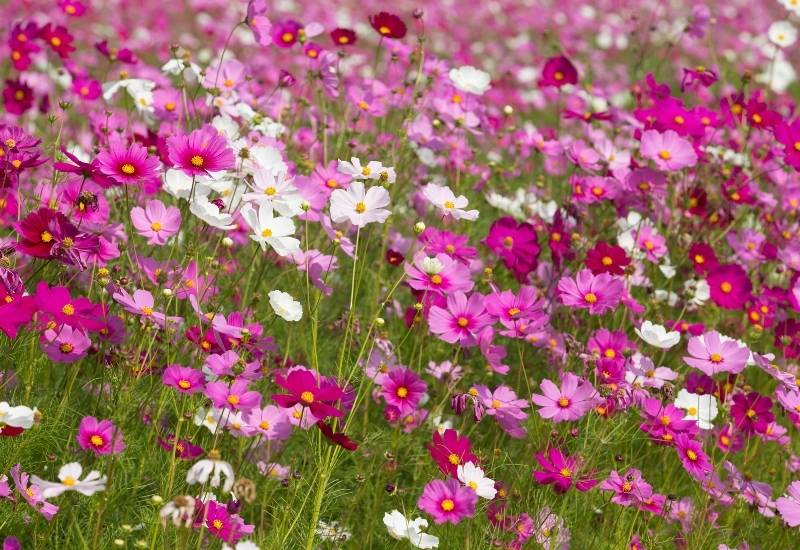
You are in luck! Cosmos is one of the most popular annuals – with people, that is because deer cannot stand it. Their paper-like flowers look light and airy on the very thinly textured foliage.
They have that beautiful oriental delicacy we all love. And many of the cosmos species are annuals, like the elegant Cosmos bipinnatus or the fiery Cosmos sulphureus.
The thin foliage annoys the deer, while you can enjoy their beautiful white, pink, red, magenta and purple blooms that last all summer and fall!
2: Spider Flower (Cleome spp.)
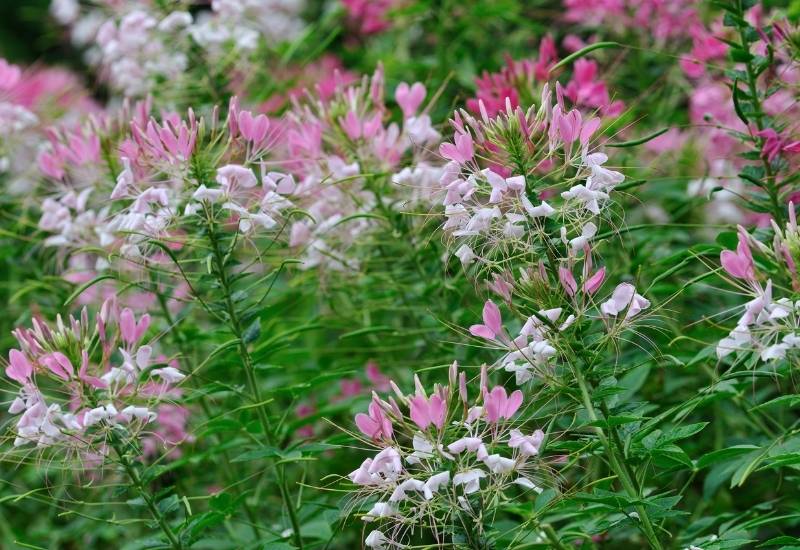
Spider flower is a wild looking annual that deer will not bother with. It is perfect for natural looking gardens, like cottage gardens and wild prairies. It is great to fill gaps in borders, where it produces elegant inflorescences of many colors.
These can be white, yellow, pink, or magenta, and they will last for months. In fact they start in early summer and will only stop with the first freeze.
Deer and rabbits don’t appreciate them, luckily for you. Because this is an easy tall annual to grow, you can actually use it as a “barrier” against unwelcome horned guests.
3: Larkspur (Delphinium spp.)
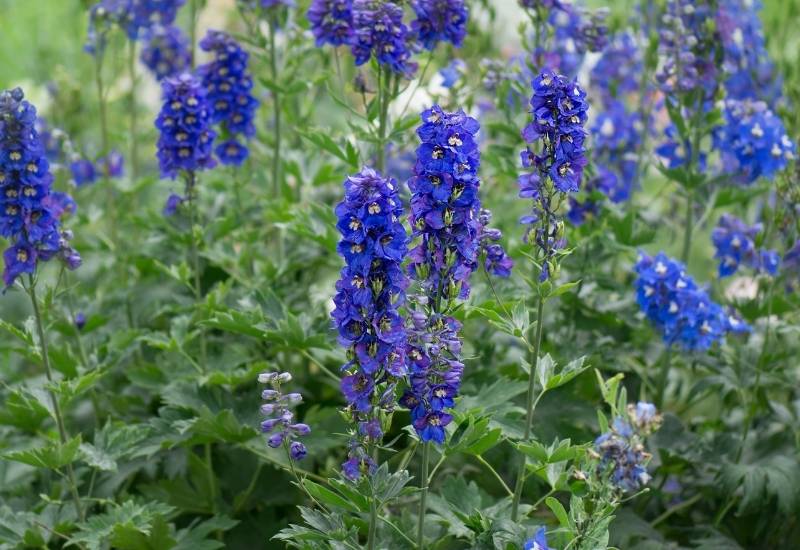
Deer will keep well away from the tall spikes of colorful flowers that larkspur produces. In fact, these deer resistant shade annuals are literally poison for them!
And so you can fill your garden with showy white, magenta, blue, purple and violet flowers in summer and all the way to the end of fall.
Just grow it all around your garden, making beautiful and colorful barrier against deer. This is really a perfect plant to use for this. It is tall, vigorous and it also fits perfectly well into borders and hedges.
4: ‘Love and Wishes’ Sage (‘Salvia ‘Love and Wishes’)
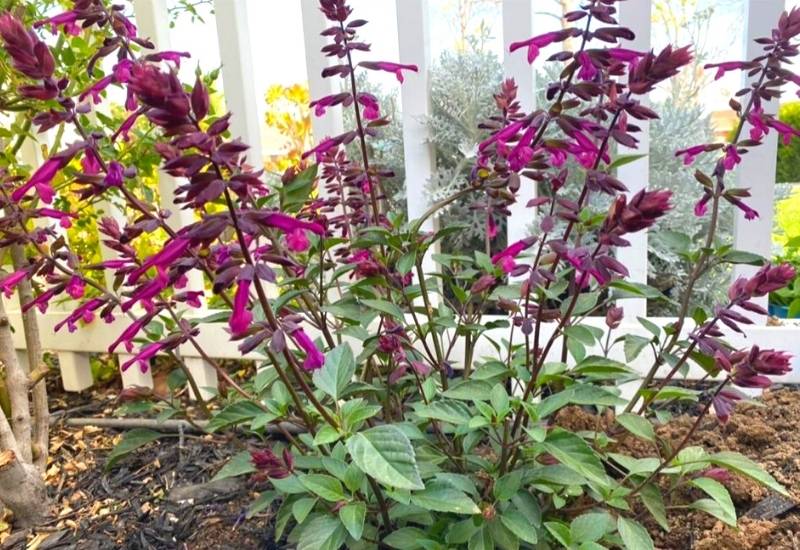
‘Love and Wishes’ sage has bracts of the deepest and most pure purple which deer do not appreciate. Actually deer do not like any of the sage varieties, but this fits our description.
You see, sage is actually a perennial but this beautiful variety is not cold hardy, so, in most temperate places it is treated as an annual.
The intense blooms will last from late spring to the first frost, and you can enjoy them in natural looking borders or flower beds without fear that deer will munch on them!
5: Mexican Sunflower (Tithonia rotundifolia)
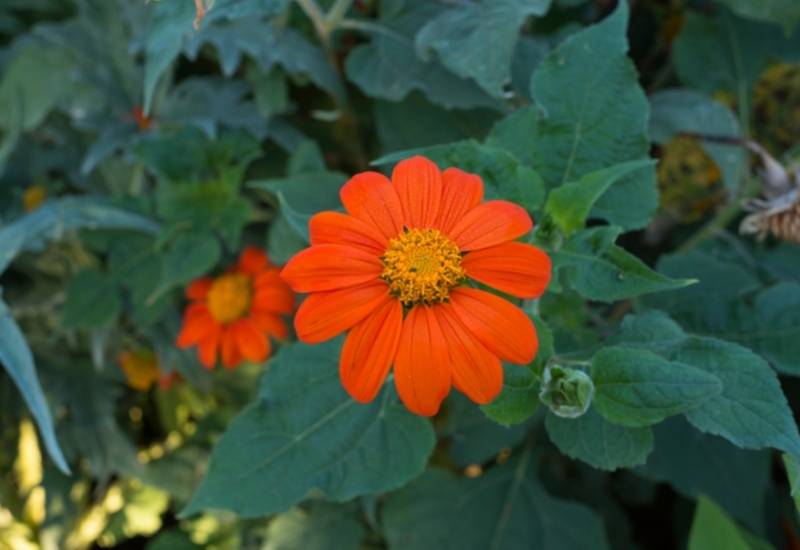
Mexican sunflower will bring the heat and color of Central America to your country, but it won’t attract deer! The showy, orange to fiery red flowers with gold daisy like centers can reach 3 inches across (7.5 cm) and they will attract bees, hummingbirds and pollinators galore.
But not deer – no! They just cannot stomach these beautiful sunny flowers! The fact is that the beautiful heart shaped leaves of this summer flower have a hairy cover that puts them off.
Mexican sunflower will grace your borders and beds with its vibrant flowers from summer to the first frost, and trust me, they will put on a massive show for you!
6: Flowering Tobacco (Nicotiana alata)
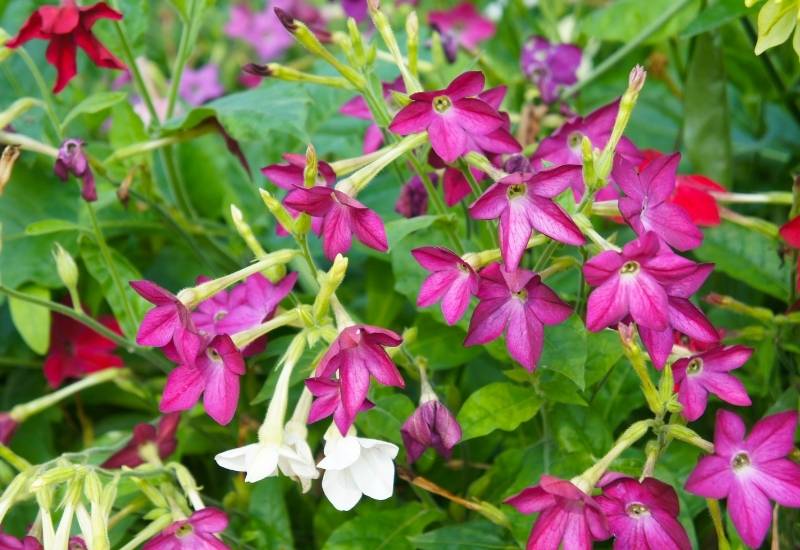
Deer don’t smoke and they don’t like tobacco; but did you know that there are varieties of tobacco with beautiful leaves and flowers?
Flowering tobacco is a garden variety with green, broad oval leaves and star shaped flowers that open at the end of a trumpet.
These can be of different colors, like white or purple. But if you want an unusual and eye catching variety have a look at Nicotiana alata ‘Lime Green’!
The name of this winner of the Award of Garden Merit by the Royal Horticultural Society refers to the vibrant color of the flowers!
This is one of those perennials more often grown as annuals. This plant is closely related to tobacco plants, but while you won’t be smoking its leaves, deer will keep at a distance because their sense of smell id far more refined than ours. It is excellent for herbaceous borders.
7: Heliotrope (Heliotropium arborescens)
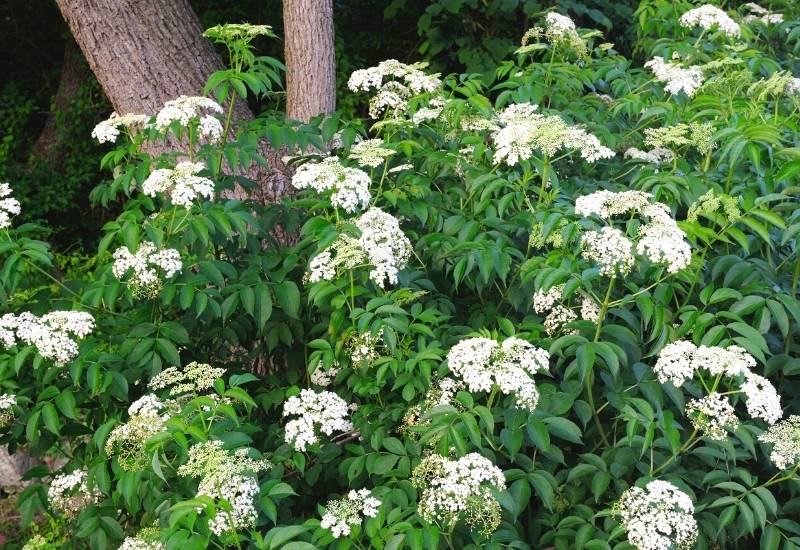
Heliotrope is a sweet smelling shade-tolerant herbaceous shrub with very beautiful blooms, but deer don’t like its leaves. It is a tender perennial to be exact, but because it grows very fast it can be grown in temperate areas as an annual.
The shrubs have a round habit. The flowers come as small, deep violet star shaped heads crammed into large inflorescences.
Heliotrope looks great in natural looking borders and beds of informal and traditional looking gardens.
8: Mexican Marigold (Tagetes lemmonii)
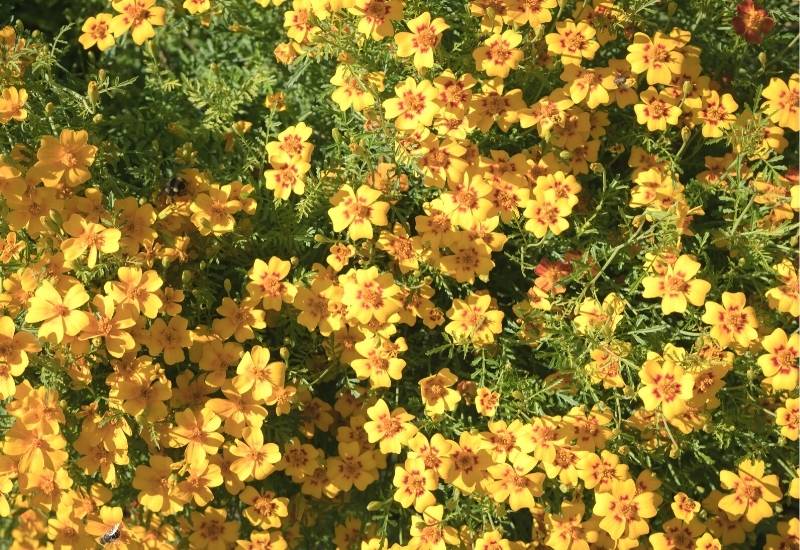
Mexican marigold has simple bright yellow flowers with 6 round broad petals each and a daisy like disk at the center. Pity deer just can’t stomach its strong smell.
Nor do many other animals, in fact, including mosquitoes and green flies. It is a medium but broad flowering shrub that blooms in winter, spring and fall but not in summer. In warm climates, it is perennial, but for most of us it is will only grow as an annual.
This beautiful plant is an ‘animal and pest repellers” like few. Grow it in borders and even in your vegetable garden to keep pests and deer at safe distance!
9: Nasturtium (Tropaeolum majus)
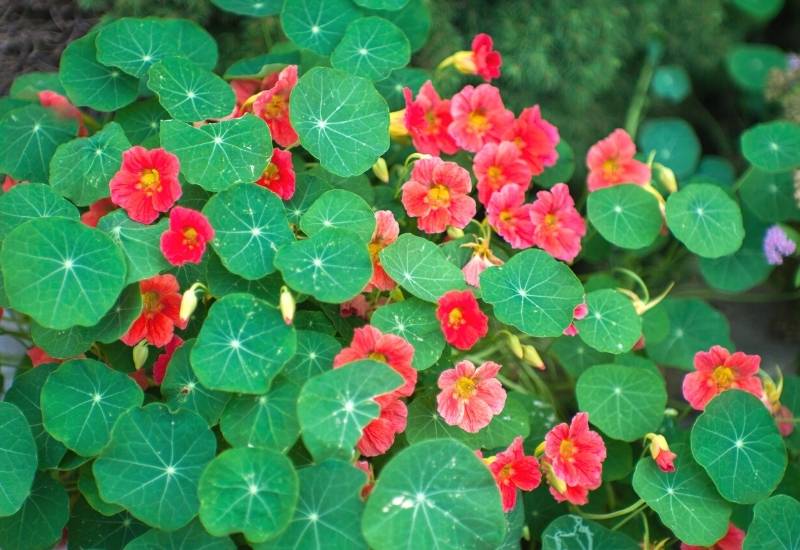
Did you expect that a popular and sweet looking sun-loving annual like nasturtium was deer resistant? It does not look it, does it? But it is! Nasturtiums are classified as moderately deer-resistant because they are just “stinky” for deer to eat.
The tender looking orbicular leaves look delicious, and this plant is actually edible to Humans… It has a refreshing fragrance and a lovely mustard flavor… But deer have different tastes for ours.
Although nasturtiums may not be a top choice for deer to eat, they can still be consumed and therefore require some form of protection.
You can choose the flower color you prefer, from fiery orange red to yellow. Mix it in with other plants in borders and beds to keep deer away.
10: Painted Tongue (Salpiglossis sinuata)
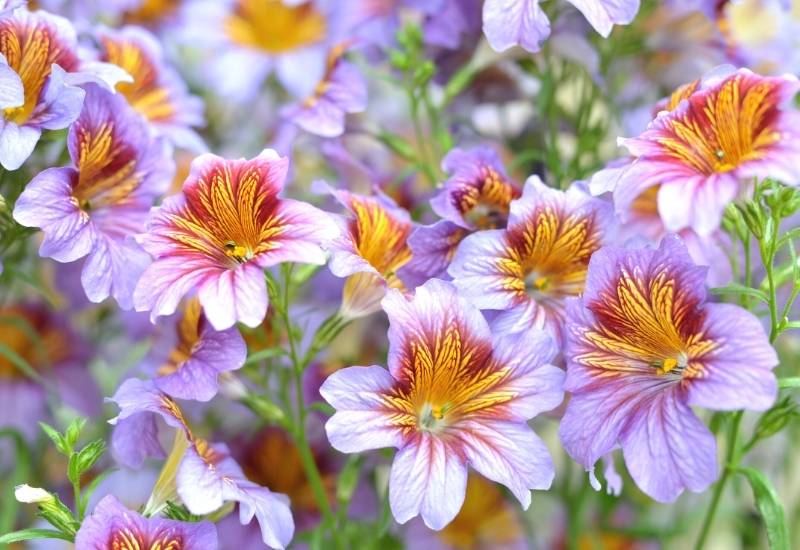
Painted tongue is one of the most striking shade-tolerant annuals ever. Lucky for us, this annual flower is actually deer resistant too. The flowers have a unique decorative pattern of bright colors that makes them unique.
They usually have three very bright and contrasting colors, like yellow, red and blue, or orange, purple and violet etc.
The central part of the flower had an intricate and interlaced design of two, colors, while the third forms the rest of the petals. Used as a garden plant since 1820, it is now a lesser known annual despite its impressive look!
Bring painted tongue back into fashion growing it in your borders and beds. You can wow your guests while keeping deer at bay at the same time.
11: Floss Flower (Argeratum haustonianum)
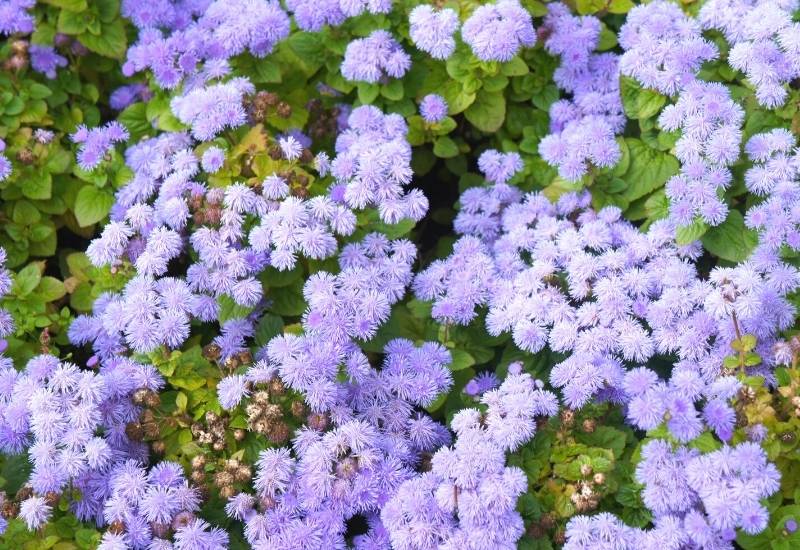
From mid summer to fall floss flower fills with blooms that look like violet blue cotton buds. Look closely and you will see that they are a sea of aster like flowers.
But you will not see any dear near them because this beauty of Nature is not for them…. And if you wish, there are varieties with different colors too, including violet, lavender, oink or bicolor!
It’s a lovely and soft looking flowering deer-resistant annual that mixes well with other annuals and perennials in borders and flower beds. It is more suitable to informal and traditional gardens than formal ones.
12: African Marigold (Tagetes erecta)
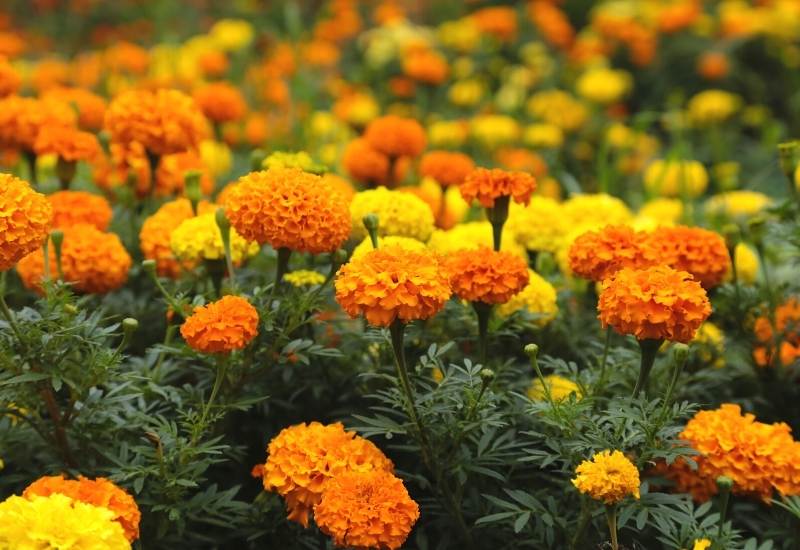
The most classical double marigold in the world totally loathsome to deer! African marigold will offer you long blooms of bright orange flattened globular flowers in hat last all summer and all fall.
But it has such a strong smell that deer find it totally repulsive.
This easy to grow annual will repel deer, but also most pests and mosquitoes. In fact, plant in your beds, borders, in your vegetable garden or even in window sills, and it will be your best ally against unwelcome guests,
Beautiful Annuals with New Deer Problem
Looking back, there are a fair few annuals you can grow without having a “deer problem”. From common marigold to the striking painted tongue, there are annuals for different tastes and garden designs, and some will be fine for you too.
Actually, if deer visit your garden regularly, try to grow some of those annuals that keep them away, like flowering tobacco or larkspur…
You can use these plants actively, to push them off, rather than passively, to avoid deer damage!
And this was my last tip on the subject…

Written By
Adriano Bulla
After many years as an academic in London, Adriano Bulla became a writer, publishing books like A History of Gardening, Organic Gardening and Elements of Garden Design; he then decided to become a gardener, following his childhood dream, and has been following his dream writing and gardening professionally in Southern Europe, where he has specialized in new and innovative organic gardening fields and techniques, like permaculture, regenerative agriculture, food forests and hydroponics.

I have tried flowering tobacco for 2 years and the deer wait until the blooms come on and them mow them over. Maybe the deer in my yard don’t realize they aren’t supposed to like flowering tobacco.
Deer populations and deer taste preferences are variable, and if you have large herds with limited food supply, you are more likely to experience deer damage.
Can attest deer WILL eat African Marigold flowers!! They won’t eat the plant much, but they LOVE the blooms! So what’s the point in planting them if you never get to enjoy the flowers….
Sorry to hear that. My deer have never eaten my marigolds (yet) They usually leave the zinnias, ageratum, alyssum, dianthus, larkspur and snapdragons alone. However both will eat marigolds if there is nothing more appetizing in the area.
Isn’t Angel’s Trumpet a toxic plant? Why wasn’t it mentioned?
Larkspur wasn’t resistent
Well, my deer eat nasturtiums and begonias which are suppose to be deer resistant. right up on my porch too. Will try some you have suggested next year.
This past week (late August, 2022) deer devoured my flower gardens in front of my house. The only two plants they DID NOT eat were marigolds and vincas. Guess I’ll be planting more of them next year!
Thank you for the amazing info.
Deer will eat Mexican sunflower. I have to cove them during their early phases
of growth.
I’ve had very good luck with lantana. I purchase hanging planters, remove them from those pots, and repot in large pots. They will grow to the size of small shrubs. There are new varieties coming out every year.
I am convinced deer do not read these lists! Are they lazy… or illiterate? LOL